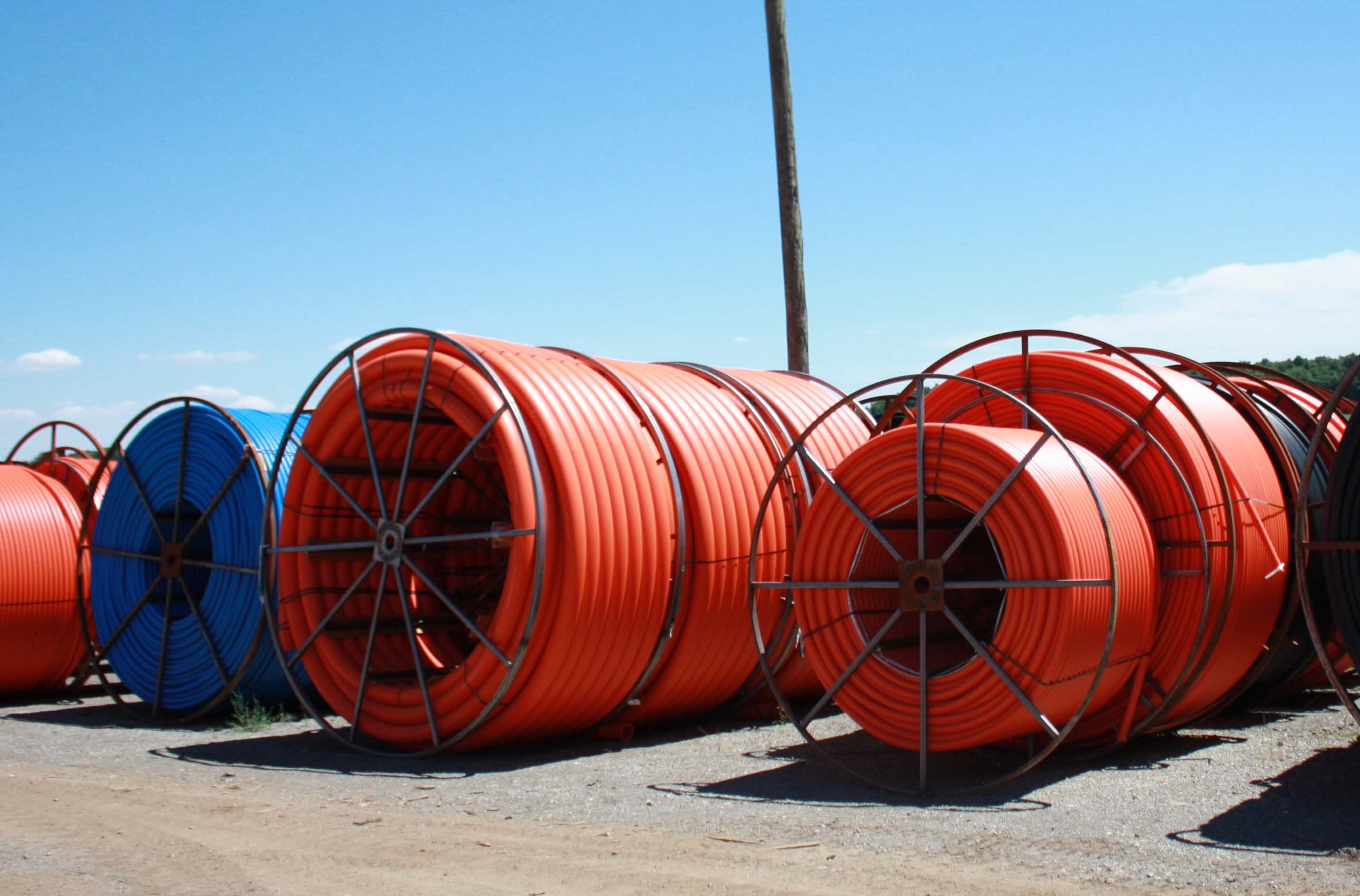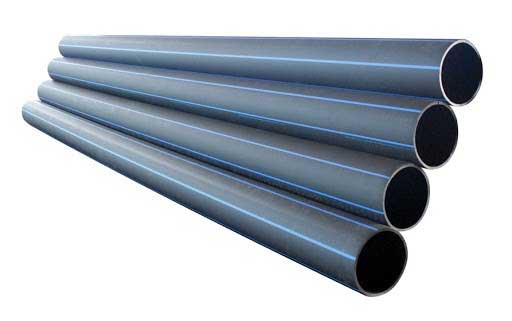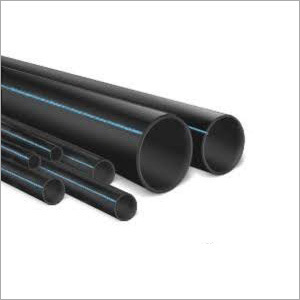How Midland TX HDPE Pipe Fittings in Stock Save Time
Wiki Article
Check Out the Production Refine Behind High-Quality HDPE Pipe and Its Applications
The production procedure of top quality HDPE pipelines is intricate and methodical. It begins with the option of basic materials that boost efficiency. Following this, ethylene undergoes polymerization to develop resin, which is then formed through extrusion. Quality control is critical, guaranteeing that the last product satisfies stringent criteria. The trip of HDPE pipelines doesn't end with production. Their applications across various markets disclose a broader value worth checking out.Recognizing HDPE: Qualities and Advantages

High-density polyethylene (HDPE) is a functional thermoplastic understood for its sturdiness and resistance to different ecological elements. This product displays outstanding tensile toughness, making it appropriate for demanding applications. Its low-density structure adds to a light-weight item, facilitating convenience of dealing with and setup. HDPE additionally showcases amazing resistance to chemicals, which minimizes deterioration when exposed to severe materials.
The material's reduced moisture absorption additionally boosts its durability, making it ideal for usage in pipelines and storage space tanks. Additionally, HDPE is immune to ultraviolet (UV) radiation, ensuring that items preserve their stability even when revealed to sunshine. Moreover, its adaptability enables the creation of elaborate shapes without endangering toughness. The green nature of HDPE, often stemmed from recycled materials, includes to its allure, advertising lasting practices in manufacturing. Overall, these residential or commercial properties and benefits make HDPE a favored choice for numerous commercial and consumer applications.
Basic Material Option for HDPE Production
The selection of raw products for HDPE manufacturing is vital to validate the end product satisfies the wanted specs and top quality requirements. High-density polyethylene (HDPE) is mainly created from polymerized ethylene, originated from fossil gas such as gas or unrefined oil. The quality of these feedstocks considerably affects the mechanical and thermal residential properties of the final HDPE.Additives also play a considerable duty in improving HDPE's efficiency, consisting of antioxidants, UV stabilizers, and colorants, which boost toughness and resistance to ecological aspects. The selection process have to consider not only the chemical structure of the raw products but additionally their processing attributes to assure effective production.
The sourcing of raw products should prioritize sustainability and conformity with ecological guidelines, as liable practices are imperative in today's market. Inevitably, careful resources selection lays the foundation for generating high-quality HDPE pipelines ideal for varied applications.
The Extrusion Refine: Forming HDPE Pipeline
The extrusion procedure plays a vital duty in shaping HDPE pipes, starting with meticulous product prep work strategies that ensure excellent flow and uniformity. Just as vital is the style of the die, which directly affects the final dimensions and surface area top quality of the pipeline. With each other, these variables add significantly to the efficiency and high quality of HDPE pipe production.Material Prep Work Techniques
Effective production of HDPE pipes starts with thorough product prep work strategies, especially the extrusion process. Throughout this phase, high-density polyethylene material is initial dried out to get rid of wetness, ensuring perfect flow features. The resin is after that fed right into the extruder, where it undertakes heating and melting, transforming right into a viscous state. This home heating procedure is thoroughly controlled to keep the material's stability and efficiency. The molten HDPE is forced with a die, shaping it right into a constant pipe kind. Proper temperature level management during extrusion is essential, as it straight impacts the product's properties and the end product high quality. Once shaped, the HDPE pipe is cooled and reduced to specified lengths, ready for succeeding processing and applications.Die Layout Importance
Accuracy in die layout plays a crucial function in the extrusion procedure of HDPE pipes. The die functions as the last shaping device, straight influencing the pipeline's measurements, wall surface thickness, and surface coating. A properly designed die guarantees uniform material check this site out circulation, reducing problems such as irregularities and weak spots. The geometry of the die must be enhanced to fit the details properties of HDPE, including its thickness and thermal actions during extrusion. Furthermore, the cooling price of the product as it passes with the die can markedly affect the pipe's structural integrity. Consequently, buying sophisticated die modern technology is vital for makers aiming to produce top notch HDPE pipes that fulfill industry requirements and client assumptions.Quality Assurance Measures in HDPE Manufacturing
Although different aspects affect the quality of HDPE pipeline production, efficient high quality control actions are vital to assure consistency and dependability in the end product. Trick quality assurance practices include extensive product examination, confirming that learn this here now the raw polyethylene fulfills well established standards for pureness and density. During the extrusion procedure, parameters such as temperature level, pressure, and cooling time are very closely monitored to keep dimensional accuracy and architectural stabilityIn enhancement, post-production testing is important; makers usually perform hydrostatic examinations to examine the pipeline's toughness and resistance to pressure. Aesthetic evaluations for surface area defects better improve quality guarantee. Certification from appropriate criteria companies, like ASTM or ISO, provides an additional layer of reliability. By executing these thorough quality assurance actions, producers can minimize issues, enhance efficiency, and make certain that the HDPE pipes fulfill the details requirements of different applications, eventually leading to customer contentment and rely on the item.
Applications of HDPE Pipe Throughout Industries
HDPE pipes are made use of throughout different sectors as a result of their resilience and convenience. In water distribution systems, they ensure efficient distribution, while in wastewater administration, they supply trusted services for waste transport. In addition, farming watering networks profit from HDPE's resistance to corrosion and flexibility, making it a perfect choice for contemporary farming practices.
Water Circulation Solutions
A considerable number of industries count on high-density polyethylene (HDPE) pipelines for efficient water circulation systems. Known for their longevity and resistance to rust, HDPE pipes are commonly used in metropolitan water system networks, farming irrigation, and commercial applications. Their lightweight nature assists in easy handling and installment, decreasing labor prices and time. Additionally, HDPE pipelines can fit numerous stress levels, making them ideal for both reduced and high-pressure systems. American Plastics HDPE Pipe for Oilfield. The adaptability of the material allows for smooth assimilation into existing framework, decreasing the requirement for extensive excavation. In addition, HDPE's resistance to chemical seeping warranties that the water supplied stays safe and tidy, making it a perfect choice for keeping the top quality of potable water throughout different sectorsWastewater Monitoring Solutions
Efficient water circulation systems likewise lead the means for innovative her explanation wastewater administration remedies, where high-density polyethylene (HDPE) pipes play a considerable duty. Popular for their durability and resistance to deterioration, HDPE pipelines are optimal for carrying wastewater in different setups. Their adaptability permits for simple installment in intricate atmospheres, minimizing the requirement for considerable excavation. In addition, HDPE's smooth indoor surface area lowers rubbing, improving flow prices and effectiveness. These pipelines are also resistant to chemical leaching, making sure that impurities do not jeopardize the surrounding setting. Industries, towns, and therapy facilities progressively depend on HDPE pipes for their reliability and long life, making them a favored choice for modern-day wastewater management systems. This adaptability underscores the essential importance of HDPE pipelines across countless applications.Agricultural Irrigation Networks
Agricultural watering networks profit substantially from using high-density polyethylene (HDPE) pipes, which provide reliable and trusted water delivery to plants. HDPE pipes are lightweight, making them easy to carry and set up, while their versatility allows for numerous configurations in diverse surfaces. These pipelines show excellent resistance to deterioration, chemicals, and UV radiation, guaranteeing resilience in rough farming settings. In addition, their smooth indoor surface area lessens rubbing loss, optimizing water circulation and decreasing energy costs associated with pumping. The longevity of HDPE pipes, frequently surpassing 50 years, adds to lower maintenance and substitute expenses. Farmers increasingly count on HDPE pipelines to enhance irrigation effectiveness and promote sustainable farming methods, eventually leading to improved crop yields and resource conservation.
Future Fads in HDPE Pipe Innovation
As the demand for sustainable and efficient framework expands, innovations in HDPE pipeline innovation are poised to transform numerous industries. Emerging trends consist of the integration of wise technologies, such as sensors and IoT abilities, which promote real-time surveillance of pipeline conditions, reducing maintenance costs and stopping leakages. Furthermore, the growth of sophisticated production methods, such as 3D printing, is allowing the manufacturing of facility, customized pipeline designs that accommodate specific job needs.In addition, the concentrate on recycling and circular economic climate practices is driving the technology of HDPE pipes made from recycled products, boosting sustainability. Improved jointing techniques, such as electro-fusion and mechanical fittings, are also improving setup efficiency and dependability. The expanding focus on environmental laws is pressing makers to take on greener manufacturing processes, ensuring that HDPE pipes not only satisfy market standards however also promote an even more lasting future for framework development.
Regularly Asked Questions
Just How Does HDPE Contrast to Various Other Plastic Materials?
HDPE surpasses many other plastic products concerning durability, chemical resistance, and adaptability. Its low density and high tensile strength make it perfect for numerous applications, usually going beyond choices in both performance and durability.What Are the Ecological Effects of HDPE Production?
The environmental impacts of HDPE production consist of greenhouse gas exhausts, energy consumption, and possible pollution from producing processes. Additionally, inappropriate disposal can cause dirt and water contamination, raising issues regarding long-lasting environmental effects.Can HDPE Pipes Be Recycled?
Yes, HDPE pipes can be reused. Many centers approve made use of HDPE for processing, changing it into new products. This recycling adds to sustainability efforts, reducing plastic waste while saving resources and energy in the production cycle.What Is the Life Expectancy of HDPE Pipeline?

Just How Do Temperature Level Variants Influence HDPE Pipeline Efficiency?
Temperature variations substantially affect HDPE pipe efficiency, affecting versatility and stamina. High temperatures can result in softening, while low temperature levels might create brittleness, ultimately influencing the pipeline's longevity and viability for different applications in diverse atmospheres.Report this wiki page